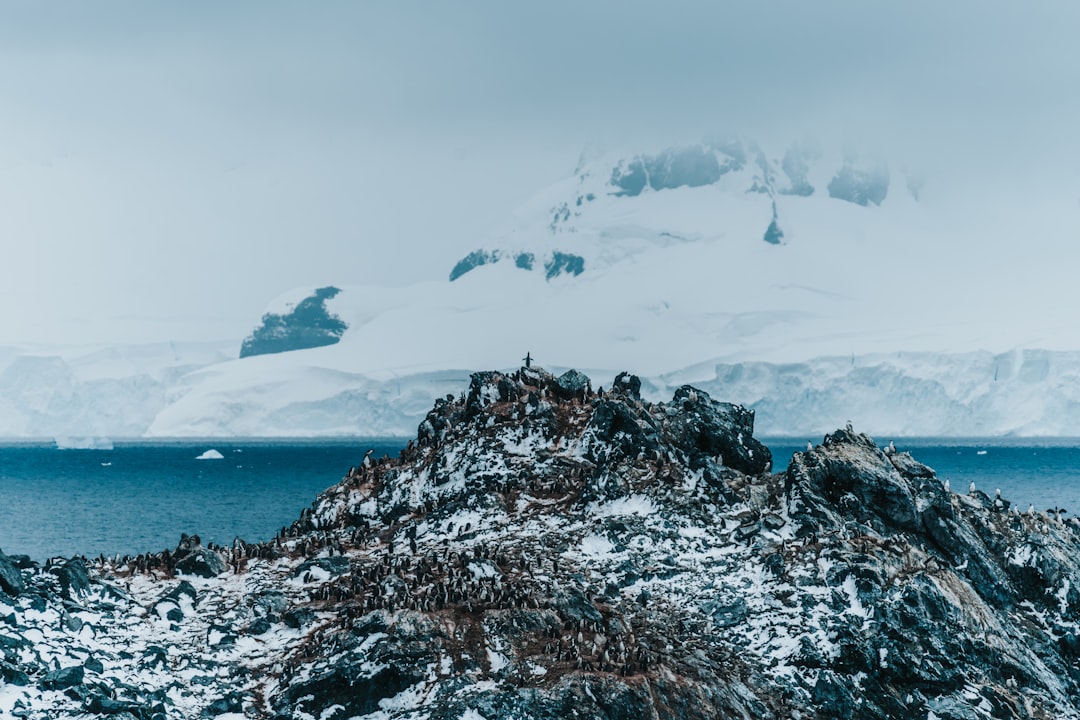The Drake Passage, a body of water that separates South America from Antarctica, is renowned for its tumultuous seas and rich biodiversity. Named after the English explorer Sir Francis Drake, who navigated these waters in the late 16th century, the passage has become a focal point for adventurers, scientists, and nature enthusiasts alike. Its unique geographical and ecological characteristics make it a significant area of study and exploration.
The passage serves as a gateway to the Antarctic region, drawing attention not only for its natural beauty but also for the challenges it presents to those who dare to traverse its waters. As one of the most famous maritime routes in the world, the Drake Passage has captured the imagination of many. It is often described as a rite of passage for sailors and travelers heading to the Antarctic.
The unpredictable nature of its waters, combined with its stunning landscapes, creates an allure that is hard to resist. For those who venture into this realm, the Drake Passage offers an experience that is both exhilarating and humbling, reminding them of the raw power of nature.
Key Takeaways
- The Drake Passage is a body of water between South America’s Cape Horn and the South Shetland Islands of Antarctica, known for its challenging weather conditions and historical significance.
- It is a crucial route for global maritime trade and scientific research expeditions, connecting the Atlantic and Pacific Oceans.
- The passage is notorious for its unpredictable and extreme weather conditions, including strong winds, high waves, and rapidly changing temperatures.
- The area is home to diverse wildlife, including whales, seals, and seabirds, making it a popular destination for wildlife enthusiasts and researchers.
- Navigators face numerous challenges when crossing the Drake Passage, including rough seas, icebergs, and strong currents, requiring advanced navigation and safety measures.
Geographical Location and Significance
The Drake Passage lies between Cape Horn at the southern tip of South America and the Antarctic Peninsula. Spanning approximately 800 kilometers (500 miles) in width, it connects the Atlantic and Pacific Oceans, making it a crucial maritime corridor. This strategic location not only facilitates international shipping routes but also plays a vital role in global oceanic circulation patterns.
The passage is characterized by its deep waters, with depths reaching over 4,000 meters (13,000 feet), which contribute to its complex marine ecosystem. The significance of the Drake Passage extends beyond its geographical features. It serves as a critical habitat for various marine species, including whales, seals, and seabirds.
The nutrient-rich waters are a result of upwelling currents that bring cold, deep water to the surface, fostering a diverse array of life. This ecological richness makes the Drake Passage an essential area for scientific research and conservation efforts, as understanding its dynamics can provide insights into broader environmental changes affecting our planet.
Notorious Weather Conditions

The weather conditions in the Drake Passage are infamous among sailors and researchers alike. Known for its fierce storms and unpredictable winds, the passage can transform from calm to chaotic in a matter of hours. The convergence of cold Antarctic waters with warmer currents from the north creates a volatile environment that can lead to towering waves and strong gusts.
This unpredictability has earned the Drake Passage its reputation as one of the most challenging bodies of water to navigate. Sailors often recount tales of their experiences in the Drake Passage, describing how they faced relentless winds and turbulent seas. The passage’s weather can be particularly daunting during the winter months when storms are more frequent and intense.
Despite these challenges, many adventurers are drawn to the thrill of sailing through such a formidable environment. The dramatic weather patterns not only test navigational skills but also offer a unique opportunity to witness nature’s raw power in action.
Impact on Wildlife
| Wildlife Impact | Metrics |
|---|---|
| Loss of Habitat | Acres of natural habitat destroyed |
| Species Decline | Number of species at risk |
| Migration Disruption | Percentage of migratory routes affected |
| Population Fragmentation | Percentage of fragmented wildlife populations |
The Drake Passage is home to an astonishing variety of wildlife, making it a vital area for marine biodiversity. The nutrient-rich waters support large populations of krill, which serve as a primary food source for many species, including whales, seals, and seabirds. Among the notable inhabitants are humpback whales, orcas, and various species of penguins that thrive in this unique ecosystem.
The passage acts as a migratory route for these animals, providing them with essential feeding grounds during their seasonal journeys. The impact of the Drake Passage on wildlife extends beyond mere sustenance; it also plays a crucial role in breeding and nurturing young animals. For instance, many seabirds nest on the rocky shores of nearby islands, relying on the rich marine resources found in the passage to feed their chicks.
The interplay between ocean currents and marine life creates a dynamic environment that supports complex food webs. As climate change continues to affect ocean temperatures and currents, understanding how these changes impact wildlife in the Drake Passage becomes increasingly important for conservation efforts.
Historical Significance
The historical significance of the Drake Passage cannot be overstated. It has long been a critical route for explorers and navigators seeking to chart unknown territories. Sir Francis Drake’s expedition in 1578 marked one of the first recorded passages through these waters, paving the way for future exploration of Antarctica and beyond.
Over the centuries, numerous explorers have braved the treacherous conditions of the passage in search of new lands and trade routes. In addition to its role in exploration, the Drake Passage has also been pivotal in maritime history. It has served as a key route for whalers and sealers during the 19th century, contributing to economic activities in the region.
The passage’s historical legacy is intertwined with tales of adventure, discovery, and survival against the odds.
Challenges Faced by Navigators

Navigating the Drake Passage presents numerous challenges that test even the most experienced mariners. The unpredictable weather patterns can lead to sudden changes in sea conditions, making it essential for navigators to remain vigilant at all times. Strong currents and shifting winds can create hazardous situations that require quick decision-making and adaptability.
Many sailors have encountered rough seas that can lead to equipment failure or even capsizing if not managed properly. In addition to natural challenges, navigators must also contend with limited visibility due to fog and storms. This can complicate navigation efforts and increase the risk of collisions with icebergs or other vessels.
The combination of these factors makes traversing the Drake Passage a formidable task that demands skill, experience, and respect for the power of nature. For those who succeed in navigating these waters, however, the rewards are immense—both in terms of personal achievement and breathtaking views.
Modern Navigation and Safety Measures
In recent years, advancements in technology have significantly improved navigation safety in the Drake Passage. Modern vessels are equipped with sophisticated navigation systems that utilize GPS technology, radar, and sonar to enhance situational awareness. These tools allow navigators to monitor weather conditions in real-time and make informed decisions about their routes.
Additionally, many ships now carry advanced stabilization systems that help mitigate the effects of rough seas. Safety measures have also evolved to include comprehensive training programs for crew members who operate in challenging environments like the Drake Passage. These programs emphasize emergency preparedness and response strategies to ensure that crews are equipped to handle unexpected situations.
Furthermore, international regulations governing maritime safety have been established to protect both vessels and marine life in this ecologically sensitive area. As technology continues to advance, navigating the Drake Passage becomes increasingly safer while still retaining its adventurous spirit.
Popular Expeditions and Cruises
The allure of the Drake Passage has led to a surge in popularity for expeditions and cruises that traverse its waters. Many travelers seek out these experiences as a way to connect with nature and witness some of the most breathtaking landscapes on Earth. Various tour operators offer guided trips that range from luxury cruises to more rugged adventure expeditions, catering to different preferences and budgets.
These voyages often include opportunities for wildlife viewing, allowing passengers to observe whales breaching or penguins waddling along icy shores. Additionally, many cruises provide educational programs led by experts who share insights into the unique ecology and history of the region. For those seeking adventure, some expeditions offer kayaking or camping experiences on remote islands within the passage.
Regardless of the type of journey chosen, travelers are sure to leave with unforgettable memories of their time spent navigating this remarkable body of water.
Scientific Research Opportunities
The Drake Passage serves as an important site for scientific research due to its unique ecological characteristics and role in global ocean circulation. Researchers from around the world flock to this region to study various aspects of marine biology, climate change, and oceanography. The nutrient-rich waters provide an ideal environment for studying marine ecosystems and understanding how they respond to environmental changes.
One area of focus for scientists is the impact of climate change on krill populations, which are crucial for maintaining the food web in this region. By monitoring changes in krill abundance and distribution, researchers can gain insights into broader ecological shifts occurring in response to warming ocean temperatures. Additionally, studies conducted in the Drake Passage contribute valuable data on ocean currents and their influence on global climate patterns.
As scientific interest continues to grow, so too does the importance of protecting this vital area for future research endeavors.
Environmental Concerns
Despite its natural beauty and ecological significance, the Drake Passage faces several environmental concerns that threaten its delicate balance. Climate change poses one of the most significant risks, leading to rising ocean temperatures and altered currents that can disrupt marine ecosystems. Additionally, increased shipping traffic associated with tourism and commercial activities raises concerns about pollution and potential oil spills that could have devastating effects on local wildlife.
Conservation efforts are underway to address these challenges and protect the unique environment of the Drake Passage. Various organizations work collaboratively with governments and stakeholders to establish marine protected areas that safeguard critical habitats from overfishing and industrial activities. Public awareness campaigns aim to educate travelers about responsible tourism practices that minimize their impact on this fragile ecosystem.
As awareness grows about environmental issues facing the Drake Passage, so too does the commitment to preserving its natural wonders for future generations.
Tips for Travelers
For those planning a journey through the Drake Passage, preparation is key to ensuring a safe and enjoyable experience. Travelers should be aware of potential weather conditions and pack accordingly—layered clothing is essential due to rapidly changing temperatures. Waterproof gear is also recommended since splashes from waves can be common during crossings.
Additionally, travelers should consider their sea legs; some may experience motion sickness due to rough seas typical in this region. Over-the-counter medications or natural remedies can help alleviate symptoms for those prone to seasickness. It is also advisable to stay hydrated and maintain a balanced diet during voyages to keep energy levels up.
Lastly, travelers should embrace flexibility during their journey through the Drake Passage. Weather conditions may alter planned itineraries or activities; however, these changes often lead to unexpected adventures or opportunities for wildlife sightings that enhance their overall experience. By approaching their journey with an open mind and a sense of adventure, travelers can fully appreciate all that this remarkable passage has to offer.
In conclusion, traversing the Drake Passage is not merely about reaching a destination; it is an experience steeped in history, adventure, and natural wonder. From its geographical significance to its ecological richness and historical legacy, this body of water continues to captivate those who venture into its depths. Whether one seeks adventure or knowledge through scientific exploration or simply wishes to witness nature’s beauty firsthand, the Drake Passage remains an iconic symbol of human curiosity and resilience against nature’s formidable forces.
The Drake Passage, a body of water located between the southern tip of South America and Antarctica, is known for its challenging navigation conditions due to strong currents and frequent storms.
For more detailed insights into the geographical and climatic significance of the Drake Passage, you can explore a related article on MyGeoQuest. This resource provides an in-depth look at the unique characteristics and historical importance of this treacherous yet vital maritime route.
WATCH NOW! Drake Passage: Earth’s Deadliest Waters Revealed
FAQs
What is Drake Passage?
Drake Passage is the body of water between the southern tip of South America at Cape Horn and the South Shetland Islands of Antarctica. It connects the southwestern part of the Atlantic Ocean with the southeastern part of the Pacific Ocean.
How did Drake Passage get its name?
Drake Passage is named after Sir Francis Drake, the English explorer who is believed to have been the first to sail through the passage in 1578.
What is the significance of Drake Passage?
Drake Passage is known for its rough seas and strong winds, making it one of the most challenging and dangerous navigable passages in the world. It is also an important route for the circulation of ocean currents and marine life between the Atlantic and Pacific Oceans.
What is the weather like in Drake Passage?
The weather in Drake Passage is characterized by strong winds, high waves, and rapidly changing conditions. It is notorious for its rough seas and stormy weather, making it a challenging passage for ships to navigate.
What wildlife can be found in Drake Passage?
Drake Passage is home to a diverse range of marine wildlife, including whales, seals, penguins, and various seabird species. It is a popular destination for wildlife enthusiasts and researchers due to its rich biodiversity.
How deep is Drake Passage?
The average depth of Drake Passage is around 11,000 feet (3,400 meters), with some areas reaching depths of over 15,000 feet (4,600 meters).
